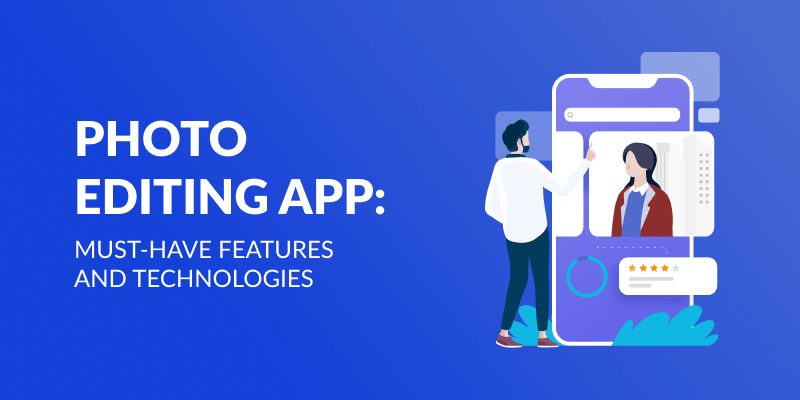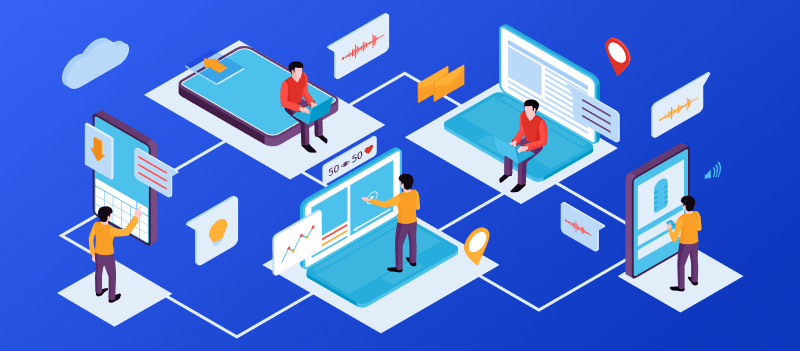Even a large expensive camera does not guarantee high-quality images. Technique alone is not always enough. That is where editing apps come into slightly correct the photo, add some details, and give it a different character or style. Editing programs can solve various problems: “revive” black and white images, remove red-eye effect in photographs, retouch portrait photos, remove defects, and get rid of unnecessary objects in the picture. All of them offer special effects, tools for zooming, cropping, quickly changing brightness and contrast, hiding flaws, and just improving the photo.

Things to Do Before Creating Your Photo Editing App
Come up with an idea
Working on an application begins with an idea. Do not despair if you find similar applications in the App Store. Take a look at your competitors and figure out what you can do to make your application better.
Analyze the market
Market analysis forms an understanding of the future audience and helps to answer questions:
- What is the purpose of your app?
- Is the application useful for end-users?
- How wide is the audience?
- Do they need to pay for the app or just buy additional features?
- What platforms are you going to use?
Before doing anything else, we recommend compiling an up-to-date list of competing applications. Carefully study user reviews, which will help to better understand the interests and preferences of the audience. It is important to identify the shortcomings of your competitors and eliminate them in your own application.
Monetization options
Before the development stage, decide how you are going to monetize. These are several basic ways to monetize applications:
- Free application with ads. This type is used by popular applications that actively interact with the users. VSCO and Instagram are one of them;
- Paid app. The most popular and profitable type of monetization. You can offer Lite and Pro app versions or provide a trial period for a paid app. The Lite application is free with a limited set of functions, and the Pro version unlocks all the functionality. Facetune and TouchRetouch are the examples;
- In-app purchases. Sell new functionality directly from the app. You can build an MVP making it free for users. After that, you can release paid feature packages. VSCO, Adobe Lightroom, Snapseed use this type of monetization.
The platform: Android or iOS?
Choosing the optimal platform for your audience, you should take into account the number of devices in the region (e.g. in Denmark 70% of smartphones work on iOS and in Kazakhstan 65% work on Android), the complexity of the development and even the affluence of the target audience.
Test the future application’s success
-
Run surveys. Share the app idea and its features with friends, acquaintances, and colleagues, conduct polls of the target audience, engage your social media subscribers, and ask them to estimate the product or give any suggestions.
-
Try MVP. Another option is to make an MVP. It is a version of your app that has only the most necessary features, which helps to test the app concept and market demand. Thanks to MVP, instead of spending a lot of effort, time and money, you can release a prototype version and collect feedback to improve the project.
Consider tools necessary in the application
- Direct feedback. We recommend building a feedback option into the application. Many users will have complaints or suggestions. Without the form, these complaints will be seen in the app market.
- The ability to rate the application. It is a common trick when you show the user a form with stars (from 1 to 5) with a proposal to evaluate the application. If the user selects 1-3, they will get a feedback form to write a complaint or suggestion. Thus, positive assessments are collected in the market while complaints are sent to the developer by mail.
Photo Editing App Features
- Make or upload a photo. Your application should have access to a smartphone camera and photo gallery.
- Built-in filters. The ability to work on all aspects of the image in detail will attract the audience. Presets are the most popular instrument of photo editing apps, they allow editing image in one click. You can add the feature to change manually the exposure, contrast, add sharpness, transparency, or color saturation, adjust the skin tone or graininess of the image.
- Rotating and changing image size. Another popular feature is crop&rotate. Square, Stories and Newsfeed formats are the most common. In addition, you can offer to make custom sizes.
- Collages and frames. Collage maker is one of the most widespread features of this app type, as well as applying original backgrounds, frames, working with image layers, adding watermarks, etc.
- Save or share. The must-have feature is the ability to save the edited image to the camera roll or share on Facebook, Instagram.
This is the basic photo editing app functionality. But to make your app competitive in the market you have to offer something more than just basic features.
- Effects and AR masks. AR filters are very popular these days. They allow adding one-click effects to the photo (masks, dog’s ears, fog, raindrops, shabby film, sun glare, etc).
- Creativity and retouch. Allows removing imperfections from the image, e.g. some unnecessary objects on the background, skin defects, or even whitening the teeth. Offering the feature of drawing or writing directly on the photo can make your application more appealing to users.
Mobile App Development Cost
To create a photo app, you need to hire a development team. It’s quite a common practice to outsource projects to software development companies. The development cost depends on the number of development hours and hourly rate. Your development team has to include at least 1-2 Android developers, 1-2 iOS developers, backend developers, QA engineers, UI/UX designers. To minimize the expenses, you can consider building a cross-platform application using Xamarin, Flutter, or React Native technologies.

There are also a few factors that influence the price:
The most expensive application components
Such components require lots of hours of development and expenses. A large number of hours can be divided between developers.
The most expensive components:
- A number of filters. For the MVP version, you can include a few presets, but the final product needs all the possible functionality to compete in the market. A famous photo editor VSCO provides basic filters for free, but to get more advanced effects, users can purchase each filter separately or buy a premium account.
- Facial expressions. This component can be very expensive. For example, the function of putting a “mask” on a selfie requires implementing the capture of facial expressions in motion. This requires a lot of development time.
- Integration of third-party services. Some features in mobile applications require integration with third-party services: for example if you plan to add paid features, such as Paypal, payment cards, AirPay, etc.
Supported devices and operating systems
If you need to develop an application for both iOS and Android, the presence of a second platform almost always doubles the price of development. For example, iOS applications must be compatible with the latest version of the iPhone and several of its popular predecessors, and Android applications must support at least three versions. Adaptation of the application for tablets can add up to 75% of the cost, and support for older versions of iOS and Android can increase development costs by one and a half times because they have performance limitations.
The complexity of the app
The more features your app has, the more it will cost. There are three groups of projects based on the number of hours:
- Simple applications. They are created for only one platform, have few screens, data, and actions that users can perform. But you can send images and log in through popular social networks (the term of work - 1-2 months);
- Mid-range applications can contain, for example, chats, payment functions, etc. It is not only the complexity of the components that affect the cost but also their number (3-4 months);
- High-cost apps can include processing of audio and video files, real-time synchronization, a large number of custom animations, and a large amount of content and screens (more than 4 months).
The geographical position of developers
The average cost of the application highly depends on the region where the developer lives:
- North America (the USA and Canada). This region is considered to be the most expensive. The cost of Android/iOS development is $150-200 per hour;
- Australian and British developers charge on average $100-150 per hour;
- Rates of companies from Belarus, Ukraine, and Russia range from $30 to $80 per hour.
Conclusion
Today, every user of social networks, especially Instagram, is at least a little familiar with the editing process. Many people just slightly retouch their photos, while others change their images beyond recognition. That is why the demand for photo editing applications will remain and only grow, despite the competition. Such an application should have an individual feature and some interesting characteristics, which need to be thought out in advance. Your product must be of high quality in order to successfully compete with others in the market, so the best option would be to order the app development from specialists. Applikeysolutions will bring your idea to reality in a timely manner and help you create the best photo editing app.







